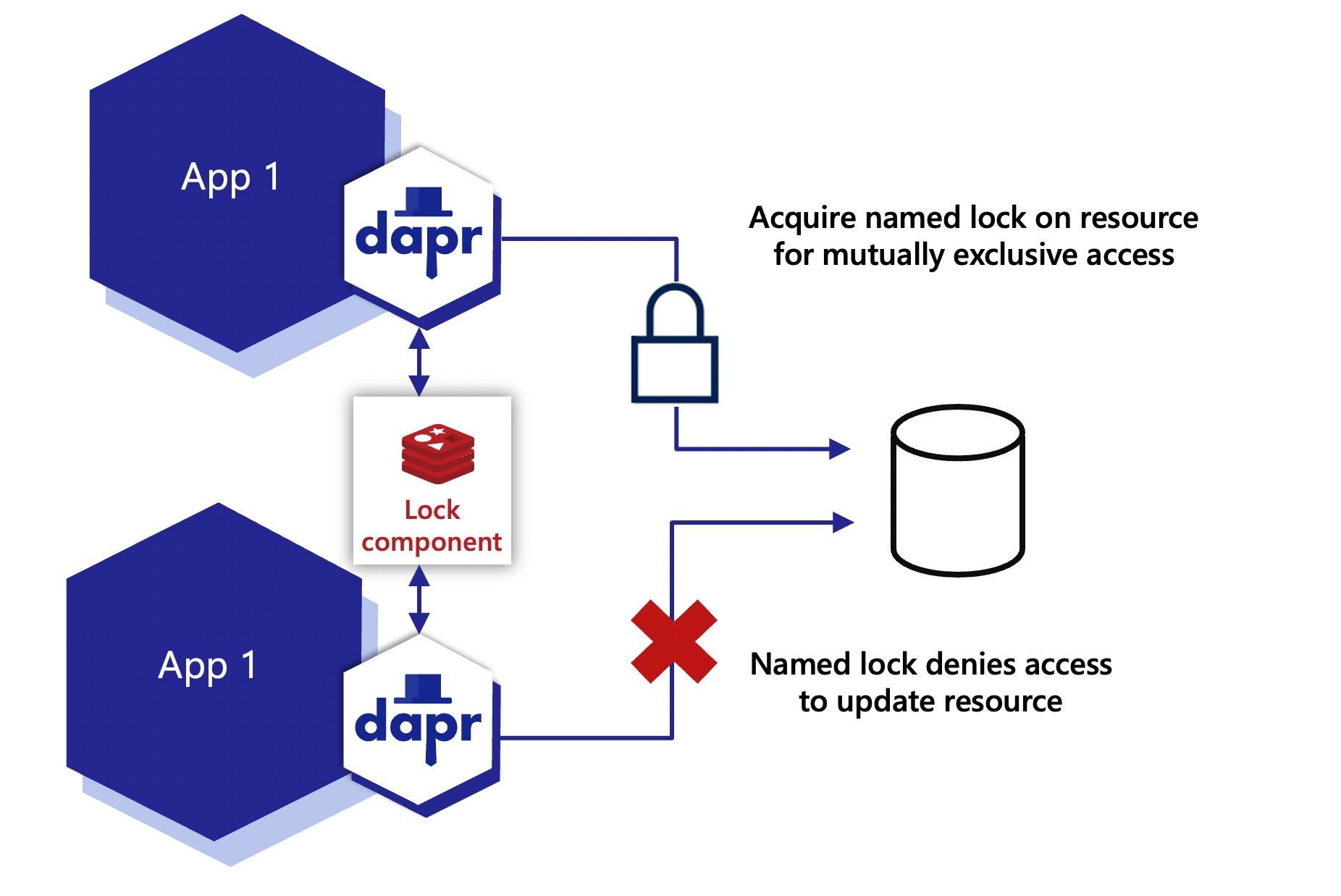The documentation you are viewing is for Dapr v1.9 which is an older version of Dapr. For up-to-date documentation, see the latest version.
Distributed lock overview
Introduction
Locks are used to provide mutually exclusive access to a resource. For example, you can use a lock to:
- Provide exclusive access to a database row, table, or an entire database
- Lock reading messages from a queue in a sequential manner
Any resource that is shared where updates occur can be the target for a lock. Locks are usually used on operations that mutate state, not on reads.
Each lock has a name. The application determines the resources that the named lock accesses. Typically, multiple instances of the same application use this named lock to exclusively access the resource and perform updates.
For example, in the competing consumer pattern, multiple instances of an application access a queue. You can decide that you want to lock the queue while the application is running its business logic.
In the diagram below, two instances of the same application, App1, use the Redis lock component to take a lock on a shared resource.
- The first app instance acquires the named lock and gets exclusive access.
- The second app instance is unable to acquire the lock and therefore is not allowed to access the resource until the lock is released, either:
- Explicitly by the application through the unlock API, or
- After a period of time, due to a lease timeout.

*This API is currently in Alpha state.
Features
Mutually exclusive access to a resource
At any given moment, only one instance of an application can hold a named lock. Locks are scoped to a Dapr app-id.
Deadlock free using leases
Dapr distributed locks use a lease-based locking mechanism. If an application acquires a lock, encounters an exception, and cannot free the lock, the lock is automatically released after a period of time using a lease. This prevents resource deadlocks in the event of application failures.
Demo
Watch this video for an overview of the distributed lock API: